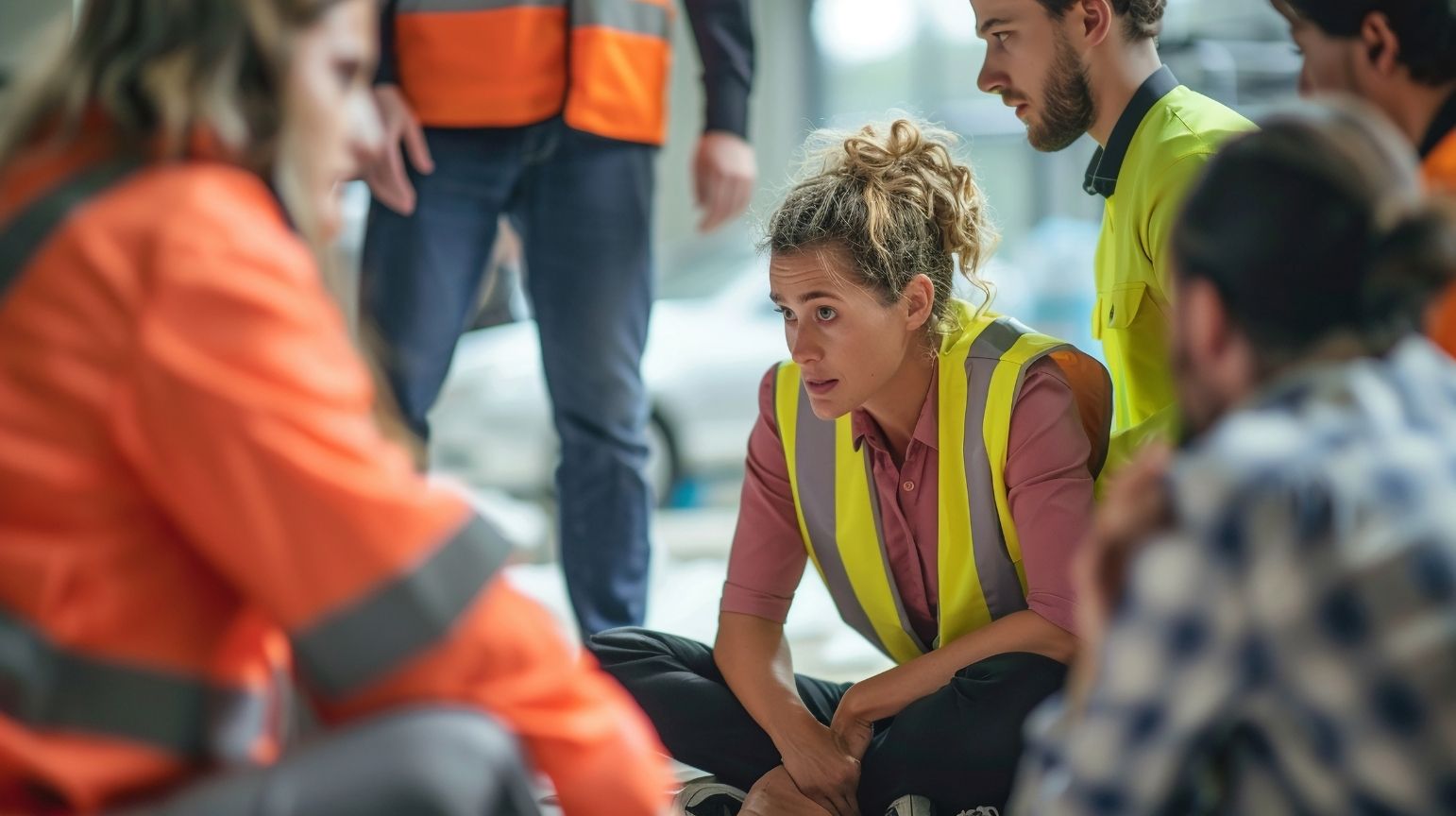Removing and disposing of tanks—particularly when it comes to lease clean-up—requires careful planning and adherence to safety regulations. This comprehensive guide will walk you through the step-by-step process of safe tank removal, ensuring an efficient cleanup process.
Introduction
Tank removal and disposal is a critical component of lease clean-up. It involves safely managing and transporting various types of tanks, which may contain hazardous materials. Whether you’re dealing with old fuel tanks, water storage tanks, or tanks that hold chemicals, it’s essential to follow strict safety protocols. Proper tank removal not only protects workers and the environment but also ensures compliance with local regulations.
Understanding the context of tank removal is pivotal. In many areas, failing to adhere to safety standards can lead to significant fines and potential legal action. Beyond compliance, there is a moral obligation to protect our surroundings. That’s why it’s crucial to equip yourself with the right knowledge and gear before starting the removal process.
Following best practices during tank removal minimizes risks associated with spills and leaks. It also streamlines the clean-up process and saves time and money. Always prioritize safety and the environment. Proper removal and disposal can prevent lasting damage to both.
In sum, tank removal and disposal require a thorough understanding of regulations, safety measures, and environmental impacts. With this guide, you’re on the right path to ensure a safe and successful lease clean-up. Let’s dive into the types of tanks and their specific requirements in the next section.
Understanding the Types of Tanks
When tackling tank removal, knowing the type of tank is crucial. Different tanks require different handling procedures. Here’s a breakdown of the most common types.
Fuel Tanks
Fuel tanks often contain gasoline, diesel, or other petroleum products. These tanks pose significant risks due to flammability and potential leaks. Before removal, check for any remaining fuel. Also, ensure that you have the right permits and follow local regulations for handling hazardous materials.
Key Considerations for Fuel Tanks
- Empty and Clean: Always drain and clean the tank before removal.
- Wear Protective Gear: Use gloves, goggles, and respirators during the process.
- Plan for Spills: Keep spill kits on hand in case of accidents.
Water Tanks
Water tanks typically hold clean water or non-hazardous substances. While less risky than fuel tanks, you still need to follow specific safety measures during removal.
Key Considerations for Water Tanks
- Empty Thoroughly: Ensure the tank is completely empty to avoid water-related injuries during lifting.
- Inspect for Mold: If the tank has been idle for some time, check for mold or bacteria.
- Disinfect: If necessary, use a disinfectant to clean the tank before removal.
Chemical Storage Tanks
Chemical storage tanks can contain various substances, some of which may be hazardous. The removal process here demands extra caution.
Key Considerations for Chemical Storage Tanks
- Understand Contents: Identify the chemicals stored in the tank. This will dictate the necessary safety procedures.
- Use Specialized Equipment: Invest in appropriate containment devices.
- Follow Regulatory Guidelines: Compliance can vary significantly. Research local laws related to specific chemicals.
Preparing for Tank Removal
Preparing for tank removal is crucial for a successful and safe clean-up process. This phase ensures that everything is in order and that potentials risks are minimized. Here’s what you need to do:
Assess the Site
First, evaluate the site where the tank is located. Look for environmental conditions that could impact the removal process. Check for unstable ground or nearby structures. It’s essential to assess the area for any hazardous materials connected to the tank. Identifying these risks upfront lets you plan for safe handling.
If the tank contains residual substances, you must take precautions. Conduct soil and water tests if necessary to address any contamination issues before removal. A detailed assessment helps you understand the work environment, allowing for better safety measures.
Gather Necessary Equipment
Next, gather all essential tools and equipment needed for the removal. Here’s a list to get you started:
- Wrenches: For disconnecting valves and fittings.
- Pumps: To help drain any remaining contents from the tank.
- Hoisting equipment: Such as cranes or slings, if the tank is large.
- Safety gear: Gloves, goggles, respirators, and hard hats are a must.
Make sure every team member has the appropriate personal protective equipment (PPE). This gear minimizes exposure to any hazardous materials that may be present.
Obtain Required Permits
Don’t forget the paperwork! Obtaining the necessary permits is a vital step in the preparation process. Regulations can vary by location, so check your local laws thoroughly. Contact your municipality or environmental agency to learn what permits you need.
Outline the steps for acquiring these documents. This may involve filling out forms and attending meetings to discuss your planned removal. Securing the proper permits ensures you comply with all regulations, avoiding potential legal issues down the line.
In summary, good preparation sets the tone for an efficient tank removal process. By assessing the site, gathering the right equipment, and obtaining necessary permits, you’ll lay a solid foundation for a successful project. Remember, safety and compliance are not just goals; they’re essential components of responsible tank removal.
Step-by-Step Tank Removal Process
When tackling tank removal, a methodical approach ensures smooth operations. Follow these straightforward steps to complete the task safely and efficiently.
Step 1: Safety First
Before you begin, take a moment for safety. Identify potential hazards associated with the tanks and surrounding area. Develop a comprehensive safety plan that covers these dangers. This includes fire risks, chemical exposure, and environmental hazards. Conduct a safety briefing with your team. Make sure everyone understands the plan and their roles. Empower them to voice any concerns; safety is everyone’s responsibility.
Step 2: Secure the Area
Securing the worksite is vital. Use cones, tape, or fences to mark off boundaries. This prevents unauthorized personnel from entering hazardous zones. Hang warning signs that inform passersby of potential dangers. Ensure all team members understand the boundaries. This reduces the risk of accidents and helps maintain focus.
Step 3: Drain the Tank
Next comes draining the tank. For fuel tanks, you’ll need to follow specific procedures. Use a pump to extract the contents safely. For water or chemical tanks, evaluate the material before proceeding. Collect and store the drained materials in appropriate containers. Proper disposal of these materials is crucial, as mishandling can lead to spills.
Step 4: Clean the Tank
After draining, it’s time to clean the tank. Start by removing any remaining residues and contaminants. Use a suitable cleaning agent, and follow the manufacturer’s instructions. Ensure you dispose of cleaning materials safely. This step is critical to prevent contamination during removal.
Step 5: Disconnect and Remove Piping
Now, focus on the piping. Detach any connected lines with care. Use the right tools to avoid damaging the pipes. If necessary, cap open lines to prevent leaks. Always wear appropriate safety gear, like gloves and goggles, to protect yourself during this process.
Step 6: Tank Removal
With the tank prepared, you can move onto the actual removal. Use specialized equipment like cranes or hoists for heavy tanks. Ensure all personnel stand clear during the lift. Communicate with your team throughout the process to maintain safety and control.
Step 7: Transporting the Tank
Finally, secure the tank for transport. Use straps or chains to prevent movement during transit. Ensure compliance with local regulations regarding transportation of such materials. Arrive at the disposal site according to scheduled guidelines, ready for the next phase.
Following these steps leads to effective and safe tank removal. Always prioritize safety and compliance to ensure a smooth process.
Disposal Procedures
Proper disposal of tanks is crucial for both safety and environmental protection. Failing to follow the appropriate disposal methods can lead to serious consequences. Here’s how to navigate the process effectively.
Understanding Local Regulations
Before disposing of a tank, it’s essential to understand local waste disposal laws. Regulations can vary significantly by region, so familiarize yourself with applicable legislation. This knowledge helps ensure compliance and protects both the community and the environment.
If the tank contained hazardous materials, additional precautions are necessary. Check with local agencies to identify any special protocols you must follow. Ignoring these rules could result in fines or legal issues, so don’t take shortcuts.
Safe Disposal Options
There are several disposal methods to consider for your tank. The most common include:
Recycling: If the tank is metal or plastic, recycling is often a viable option. Look for local recycling centers that specialize in industrial materials. Ensure the tank is cleaned and free of contaminants before recycling.
Landfilling: In some cases, disposal in a permitted landfill is acceptable. Be sure to verify that the landfill will accept your tank and check for any specific requirements.
Hazardous Material Facilities: For tanks that contained hazardous substances, disposal at a licensed hazardous waste facility is necessary. This step ensures safe handling and reduces environmental risks.
When choosing a disposal method, consider ecological impact and legal compliance. Working with licensed disposal facilities ensures that you’re following best practices.
Additional Considerations for Hazardous Tanks
Special procedures exist for tanks that previously held hazardous materials. These tanks require careful handling to prevent contamination. Start by properly cleaning the tank to remove any residual substances. After that, obtain a manifest documenting the disposal process. This record should include what materials were disposed of, how, and where.
You may also need to conduct environmental assessments before disposal. This ensures any potential harm to the surrounding area is addressed. Working with professionals who understand these regulations can make this process smoother.
Wrapping Up
Disposal procedures for tanks demand attention to detail and adherence to local regulations. From understanding disposal options to handling hazardous materials, every step plays a role in ensuring safety and compliance. Prioritize these factors to avoid future issues and promote environmental responsibility.
Equipment Removal Checklist
Removing a tank is not just about the tank itself. It involves ensuring that all associated equipment is also taken care of. This checklist will help you remember every essential piece of equipment that needs removal, leading to a smoother cleanup.
Equipment to Be Removed
First and foremost, identify the equipment connected to the tank. This might include:
- Piping: Ensure all pipes linked to the tank are removed or capped.
- Valves: Disconnect and remove any valves to prevent leaks.
- Filters: Remove filters that may be part of the system.
- Associated Equipment: Check for pumps or gauges that might need removal.
Next, ensure you have a plan for transporting all of this equipment. Ideally, gather everything in a designated area where it can be safely loaded for disposal or recycling.
Safety Checks
Before proceeding with the removal process, double-check these safety measures:
- Personal Protective Equipment (PPE): Gloves, goggles, and respirators should be worn at all times.
- Site Inspection: Confirm that the area is clear of hazards. Look for any remnants of hazardous materials associated with the tank.
- Tools and Machinery: Inspect tools to ensure they are in safe working condition.
Performing these checks minimizes risks and ensures your team is set up for success.
Final Inspection Steps
Once the equipment is removed, conduct a thorough inspection of the site. Follow these steps:
- Emptying Remaining Fluids: Ensure that all fluids are drained and collected safely. This is crucial, especially in the case of hazardous substances.
- Site Clean-Up: Check for any debris or leftover equipment. Clean the area to avoid accidents in the future.
- Documentation: Record the removal of all equipment. This will help with compliance and future site assessments.
By following this checklist, you’ll enhance safety, ensure efficient removal, and maintain regulatory compliance throughout the entire process.
Environmental Considerations
When it comes to tank removal, environmental stewardship should be a top priority. Proper practices can significantly reduce potential impacts on surrounding ecosystems. Here, we’ll discuss the importance of environmental considerations and how to implement strategies that protect our planet.
The Importance of Environmental Stewardship
Tank removal can potentially harm the environment if not done correctly. Tanks that contained fuels, oils, or chemicals may leave residues that seep into the ground. These contaminants can lead to soil and groundwater pollution. Additionally, any spills or leaks during the removal process can have dire consequences.
Being mindful of these risks can help minimize adverse effects. Adopting responsible practices ensures compliance with environmental regulations, protecting your project and community.
Potential Environmental Impacts
During tank removal, various impacts can occur:
Soil Contamination: Residual fuels and chemicals can contaminate the soil, affecting local flora and fauna.
Water Pollution: If contaminants reach groundwater, drinking supplies may become unsafe. This poses health risks to surrounding communities.
Air Quality Issues: Fumes released during the draining or cleaning process can degrade air quality.
- Biodiversity Threats: Disturbing habitats may threaten local wildlife.
Recognizing these impacts helps in forming a robust mitigation strategy.
Mitigation Strategies
To mitigate potential environmental harm, follow these practices:
Conduct a Site Assessment: Before beginning tank removal, assess the site for potential hazards. Identify vulnerable ecosystems, especially near water bodies.
Develop a Spill Contingency Plan: Prepare a plan for managing potential spills. Ensure all involved personnel know the procedures to follow.
Use Environmentally-friendly Cleaning Agents: When cleaning tanks, opt for biocompatible materials. Avoid harsh chemicals that can cause further pollution.
Monitor the Site Post-Removal: After tank removal, conduct regular checks for signs of contamination. Early detection can prevent more significant environmental issues.
Work with Experts: If dealing with hazardous materials, consult environmental specialists. They can provide guidance on safe disposal and clean-up practices.
Post-Removal Steps
Once the tank is removed, several crucial steps must take place to ensure safety and environmental compliance. This phase is just as important as the removal itself. Here’s what you need to do next.
Conduct a Post-Removal Inspection
After tank removal, conduct a thorough site inspection. Check for any residual materials or signs of contamination. Inspect the area where the tank stood. Look for soil discoloration or unusual odors that could indicate leaks. If you spot anything unusual, gather samples for laboratory analysis.
Once your inspection is complete, document your findings. A detailed report will help ensure compliance with local regulations.
Reporting Requirements
Most local jurisdictions require a reporting process after tank removal. You need to notify the relevant environmental agencies about the tank removal. Include your inspection findings in the report. Be sure to mention any actions taken to mitigate contamination risks.
Timely reporting can prevent future liability. It also helps maintain transparency with regulatory bodies.
Monitoring the Site
After removal, monitoring is essential. Make sure to observe the site for signs of contamination, including vegetation changes and groundwater quality. Schedule regular check-ins to assess the condition of the area.
Set a timeline for these follow-ups. This could be monthly, quarterly, or yearly, depending on local regulations or your site’s specifics.
Consider Possible Remediation
If contamination is detected, immediate action is required. Remediation measures might include soil excavation or bioremediation techniques. Consult with environmental experts to determine the best approach for your situation.
Remember, addressing contamination issues promptly can save money and prevent future problems.
Conclusion
Safe tank removal and disposal is crucial for any lease clean-up project. Following best practices ensures compliance with local regulations and minimizes risks. Engaging with professionals can help navigate complex situations where advanced expertise is needed.
Planning and safety should always be front of mind. Proper site assessments and equipment checks set the foundation for a successful operation. Always prioritize safety measures during each step, from securing the site to the final disposal of the tank.
When in doubt, don’t hesitate to seek help. Professionals can streamline the process and ensure that all safety protocols are followed. Ultimately, a careful approach not only protects the environment but also safeguards the people involved.
Engage the right experts, stay informed about regulations, and always keep safety first to make your tank removal project as smooth and successful as possible.







